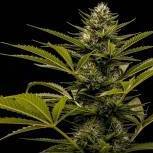Leaderboard
Popular Content
Showing content with the highest reputation on 05/06/2023 in all areas
-
Grape Diamonds - Ethos Genetics, taking her time, slowed down a bit by excessive K she seems a bit more sensetive than the rest. Platinum Silk - Inhouse Genetics, throwing a polyploidy Garlic Sherbet - Inhouse Genetics Peanutbutter Breath - Thugpug Genetics6 points
-
3 points
-
Your results thus far look awesome and speak for themselves. We need more South Africans involved in proper breeding....for the love of the herb not chasing $$$. (That will come in its own time.)2 points
-
2 points
-
Holy shit I mean you're not wrong about everything in there, but again so much additional information that has more impact on what you said before. 1st point - The Ca content from egg shell to egg shell will differ from chicken to chicken, from bird to bird, from species to species, because it's a natural thing, it's not made on a mamufacturers production line, they're not identical. Like with every other natural occuring thing. Powdering egg shell will leave you with a mix count of different stuff each and every time, cause of that very fact. an egg shell is not pure Ca carbonate, I think we all know that much? You seen a hard chicken egg shell and a thinner one? This is based on the chickens diet and the content of Ca carbonate will differ in both. Where ever you go for your info, don't go there anymore. Brother, all you need to know right now is we are here to help you just gotta be open to it. few tips for ya - I see you using some cheap generic commercial potting soil there with the wrong composition for cannabis plants? Crazy amount of bark I see there, cannabis plants do not appreciate barky soil. Not at all. Also no cannabis specific feeds I see there, just cheap generic commercial nutrients. Same stuff we all used to use before we knew much about growing cannabis. Why would you use that soil if you know so much about soil? If you can build a soil the right way wouldn't need any nutrients anyway. Just clean water. First you gotta know a little something about living soil, but for people still buying cheap generic potting soil most of the information on that topic will go right over their heads. I build my own soil, because I have been doing this long enough to know generic potting soil shouldn't even make it onto my property. My ladies drinking only clean water, no need for bottled nutrients, cause I know what I am doing. I see you also using white pots? How many people you see using white pots? You know about rule#1 - roots want blackout darkness. obviously. (under the ground is black out, no light gets there) if you can see the level of the soil line through the side of the pot then your roots don't like that pot. generally if we know what we doing we steer clear of white pots, cause such a little thing can make a big impact, but you knew that right? I see you also just bought a LED light with a design from the early 2000's? You could have gotten something of muuuuuuuuch better quality in output and design for a better price, had you just asked us. I built my own LED, go have a look on my page. You really could do with some guidance, you just gotta realise it first. Don't just go right off the bat thinking you're here to teach us, you're clearly not that guy. Like the old saying goes - the more you learn the less you know - that's cause the more you learn the more you get to know how much you didn't know before and how much there still is to get to know. the vastness of information dictates you can be wrong a million times, but you can be right only a few times. that leaves us with just saying stuff to say stuff you probably going to be wrong. have a lekker weekend2 points
-
The topic of this post is something I spend a lot of time investing in. Because there is certainly truth to the idea that people are growing 'fake strains'. BUT, it's also quite easy to find out who still uses the real thing and who doesn't, so long as you know who to trust - or at least who has proven themselves over the years to be focused on legitimacy. Because holy shit, there's a lot of guys that should be selling used cars. They can convince their audience of anything, regardless of how removed from fact it is. Unfortunately, if one gets real about this topic, feelings get hurt as well. People see their favourite breeder being called out and they think that because they found good plants in their seed pops, that the breeder is trustworthy. I've even seen guys get offended when they learn the cut they think is X is actually not. Because this is such an important topic I feel, I just want to share my experience as someone who spends a lot of time researching breeders and have worked for a couple seedbanks in vetting genetics suppliers and breeders. These are the main problems when it comes to 'fake seeds' and 'untrustworthy breeders/sellers' The Rename Game / White Label The Fall of the Dutch Replicas Authenticity of breeding stock The clone market The Rename Game In cannabis genetics it's often a case of trying to establish provenance. In other words, what is the true genetic lineage of a strain. Unfortunately, websites like Leafly popped up a few years ago and made the problem even worse. Because lineages that have been shrouded with elements of half truths and mystery suddenly get replaced by incorrect, but authorative statements on what is in a cross. Girl Scout Cookies is a good example of a cut that has a somewhat mysterious lineage and while some parts of the puzzle are out there, they aren't exactly on display on some popular website, they're discussed by guys who were close to the crews, on old forums and in small communities of people who are passionate about this stuff. The way a lot of the big seedbanks work is not like people think. They aren't all these passionate breeders walking around their facilities making selections all day. In many cases, a lot of the Dutch and Spanish genetics (will touch on this in the next topic) are outsourced. There are 2 or 3 really big breeders in Europe, who supply the same seeds to a number of 'breeders' - it is a massive white label industry. The breeder then packages, brands and markets the product. In many cases what they sell it as is something that's popular and currently desired, but what people get is just a renamed seed that may share some expressive traits. This has been common practice for a number of years now and it's one of the reasons I haven't dug into Dutch genetics for the last 5 years. Though there are still some guys there doing things legit, I don't want to take that away from them. I also don't want to make it sound like it's only these countries where this is practiced, there are a number of shady breeding practices that occur across a number of countries. But because of the legalities, Spain and Netherlands tend to be the most common locations for these companies to set up. The Fall of the Dutch One of the biggest challenges, especially in South Africa, is that there remains this idealistic view of Dutch genetics. Back in the 90s, breeders in Amsterdam had a lot of freedom. They weren't getting raided or shut down for large grows and were able to conduct large pheno hunts for their breeding. This was the era where a lot of seedbanks/breeders started to establish themselves and also do some unbelievable work. At the time, Americans were looking to the Dutch for what was hot. These days it's the complete opposite. What happened was, over a decade ago now, the Dutch government started to seriously clamp down on what one could and couldn't do with cannabis. And in the process, they raided a number of large, popular breeders at the time. In those raids, a lot of elite genetics were lost. Cuts that had been held onto for decades. A lot of people aren't even aware of these raids, because a lot of those companies never stopped selling the strains that they did before. But those that grew both the old and the new variations were able to tell the differences in the plants. What tended to happen here is that they would simply replace the cut they used with a sister or hybrid of the plant. But it's hardly ever going to be the same, especially when bred with. Since then, the Dutch have started to focus less on their traditional Hazes that made them popular in the 90s, but instead they often seek to release US varietals, things like Cookies and OG hybrids - despite the plants not representing these cuts in most cases. I smoked Dutch 'OG' for a while before I finally popped some real OG hybrids, and the differences were astounding. Since then I've popped dozens of OG hybrids and can safely say all the stuff I was getting from EU around OG was not true to the original thing. Replicas So what happens when the Dutch and Spanish breeders see Girl Scout Cookies surge in popularity? Since it was an American cut and was held pretty close, those seed banks in many cases aren't going to get hold of the cut - so they dig into their vault, find what looks the closest and maybe shares some similar traits and then they cross that together and give it the name Girl Scout Cookies and then people buy it, knowing none the wiser. This is somewhat similar to what the guy in OPs video is talking about. White label is still a more common approach than replicas, but replicas still do exist and they are a big problem. I've even seen some local breeders suggest they are working with OG Kush for instance, when there is not a single cut of the original OG Kush in South Africa (I'm pretty confident on this). Sure, you may have an OG hybrid, but even then in most cases the OGs that I see being popped are blatantly white label or replica. If you're looking to work with a particular genetic, source it from where it was found. Just like you probably wouldn't look to the US for a Haze historically, you probably shouldn't look to Europe for real OG. And this then ties into the next topic... Authenticity of breeding stock Not everyone is malicious, in many cases people are just uninformed or mislead themselves. Say for instance I hop on these forums and post a picture of a Chem 91 looking plant (of which I've found several in the S1s), if I were to tell people "Hey I've got a Chem 91 cut available" - I could even post pictures showing the same necrotic leaf traits and 'dog tongues' in the flower. Say guys got some from me and did some breeding work with it, they wouldn't even be aware that I had just given them a similar cut, but not the real thing. This is a massssssive problem, and I've seen it often. Guys who have been told that what they've got is this or that. And they will fight to the death that it is what they think it is. So as a breeder, it's really important, if you want to do things honestly, to try and have as best of a knowledge of how specific cuts express, especially if one is looking to use clone-only cuts. There are probably 50 different cuts of Cheese that go around, from 10 different breeders, but so many of those growers are convinced they have 'the Cheese'. This problem is bigger than people often like to admit, and no one is void from the impacts. There are well-respected breeders who have had to backtrack on what they claimed was in the line. This is particularly common with the Chem/Diesel/OG family, where a lot of similar, but inauthentic cuts exist. I spend a lot of time listening to The Breeder's Syndicate podcast, as I know the guys involved are pretty anal about provenance and establishing a history, as well as having been around for long enough to know the real thing from the fake. Some of the breeders that are typically associated with that circle as guys like Archive and CSI:Humboldt - two breeders I really trust when it comes to authenticity.' The Clone Market Finally, there's the clone market. Good god... The clone market... So similar to the above, with the authenticity of breeder stock - one can't understate the importance of authentic stock from clone banks. I won't mention names, but a rather popular local clone company imported stock from Europe and was advertising their new stock - but the stock they were advertising was clearly fake. The Girl Scout Cookies cut that they claimed to have looked like a classic Dutch, donkey-dick green plant. It was clearly not the real deal, and I don't think it was malicious, but I think that if you run a seedbank, it's worth making sure you can ID your cuts and have open communication with reliable growers who have grown the real thing, that can help you authenticate it. Not all cases are so benign though. There are clone companies who hunt packs of hybrids, select a cut from that pack and name it the parent it most looks like. And many guys think that because it comes with certificates that it means its legit. Certs are easy to fake and require a few minutes in photoshop to setup. Additionally, people assume that large companies with big websites and who sell themselves as leading clone experts can be trusted. Not only do many of these clone banks give you fake cuts, but they give you diseased plants that can wipe out your entire crop over time. One needs to be really careful about the clone market, especially when it comes to world renowned clone-only elites. Some of those cuts sell for tens of thousands of dollars - if someone is selling you big names with certs for pennies, that's something to raise your eyebrow at. Sorry for the rant - but I hope it proves useful, as things aren't always as cut and dry as one expects. When it comes to international genetics... I am still a huge fan of them. I want to source my genetics from those doing the largest hunts on the most authentic genetics. And in our current time period, that is the American market. But again... Know your breeders and do your research... Some international breeders I feel I can trust (just a few of many) - CSI:Humboldt - Archive Seed Bank - Swamp Boys - Jungle Boys - Bloom Seed Co - 707 Seedbank - Crickets & Cicada - Exotic Genetix - Lucky Dog - Riot - Kingdom Organics - Clearwater Genetics - Bodhi - Karma - Prolific Coast - The Source2 points
-
I partnered up with a friend a couple years ago to start our breeding journey. While we'd both played around with some pollen chucking, with Loud Chasers we wanted to do things properly. So far we're about 2 years into the work, but we wanted to make sure we created something we felt was truly our own before selecting a male to work with for when we hit our keepers and dig into the progeny. We started the process by hitting a few of our best females with a gassy lemon OG male that had some of the most potent sisters we've come across. We then ran through about 50 beans from the resulting crosses and made two selections to take further. One was a very special Sour Power OG cut and the other Death Row, a CSI:Humboldt strain that has Black Death in it, a lesser known cuf from Bodhi. It is a selection of Sterling Skunk. Above: Death Row x Champawat #8 We then ran these two select cuts several times to get an idea of how they express in different environments. I'm now in the process of crossing another OG dominant male into the mix. I want to retain the dark hues and stank of the Death Row #8 we ended up keeping, but also add some pure OG fuel in. I don't mind doing a bit of an incross here to strengthen the OG traits. Above: Sour Power OG (CapeTownLoud Cut) In the other (SPxCH) selection we made, we're also looking to add some of the resin that the Race Fuel line tended to exhibit. We're still a good while out of our final crosses for release and stuff, but at least at this point we're quite far into finding something that feels ours. Hopefully we'll have our final stud selected in the 6 months or so.1 point
-
Brother I hear ya, and I'm not trying to teach anybody anything or rub people the wrong way, all I am trying to say is that there is more than one way to skin a cat. I got 11 plants growing 5 strains, 7 autos (4 strains) and 4 photos, (2 strains) oh and 14 photos outside..., Now to explain to you why I am breaking rules like crazy on various plants - I topped a 7-day old Seedling to see how the the plant reacts to that big no no. - would simply be fruitless, because I know you don't care about the small processes, we are different and that's cool. But I do, that cheap soil is the easiest for me to 1. get and 2. sterilise and nutralise it. It's got no nutritional value whatsoever... the closest point to zero. White pots can be a good option for growing cannabis indoors, as they reflect more light than darker coloured pots, which can help to maximize the amount of light that reaches the plant's leaves. This increased light reflection can help to increase overall plant growth and yield. Additionally, white pots may help to keep the soil and roots cooler in hot conditions, as they reflect more heat than darker pots. (I lined 3 pots with higher reflection properties - the ladies at the back are 7 days older and they seem to be perfectly in love with their environment variables) "Crows has as much right to sing as nightingales do." You do your select purchases of expensive "organic" feeds, soils, etc. But in reality, most of the best weed in the world, gets only fresh batshit, mineral spring water and tropical sunlight. - This is an entirely different chapter altogether - and in my humble opinion the key to how the plant defends itself - that old design has the power and spectrum I need (and still was really outside my budget), I monitor my VPD and DLi myself daily, regularly. Simply because I love to watch the plats re-act to adjustments. I am trying strain specific hypothesis (on my photos, which you would probably call torture), which when the time is right, I will share gladly my findings to those who are interested. If there was an exact science to growing A-grade highly potent marijuana, everybody would be doing it. But here is the biggest dynamic, genetics. That means that every individual plant will use and do what it's genetics tells it to do. for example if your 1 plant's genetics dictates that it should only use small amounts of magnesium then even if the normal amount of magnesium is there to use, the plant won't instinctively use it, however a trigger in the environment can cause the plant to suddenly start using excess amounts of magnesium because "it learned" now you will probably tell me BS, however think of it this way - If you were born in China even with your current genetics you would not be the same as you are now, if you had to grow up in China you would HAVE to adapt as you grow - Thus the debate or the result would be would the outcome be better or worse? Would you have thrived or died in China because of your genetic difference. So again no teaching and again I appreciate the input - you have your magics that works for you - I never denied that. I merely stated that the plants use extra magnesium for seed production and later eggshells contain calcium. You are the one that said why it wouldn't help, I then merely stated why it would... factually1 point
-
Eggshell powder is typically made by sterilizing and drying eggshells and then grinding them into a fine powder. It is a commercial product widely available in health food stores and online. Eggshell powder is often used as a calcium supplement, and it can also be added to foods and beverages as a natural source of calcium. Powdered eggshells, on the other hand, are simply eggshells that have been ground into a powder. This can be done using a mortar and pestle or a food processor. Powdered eggshells are often used in gardening as a natural source of calcium for plants, and they can also be added to animal feed as a calcium supplement. The main difference between eggshell powder and powdered eggshells is the degree of processing. Eggshell powder is typically made using a sterilization process that removes any potential contaminants, whereas powdered eggshells may not be sterilized. Additionally, eggshell powder may contain other minerals and nutrients in addition to calcium carbonate, depending on the manufacturer. Eggshell powder and powdered eggshells are good sources of calcium carbonate, but eggshell powder is a commercial product that has been processed and may contain additional nutrients, while powdered eggshells are simply ground-up eggshells and are typically used in gardening or animal feed. As a general rule of thumb maintain a calcium to magnesium ratio of approximately 3:1 during the flowering stage, and it is recommended to provide between 100-200ppm of calcium to the plants in the flowering stage. 200ppm: 200mg/L x 25 L (Soil pot)= 5,000 mg or 5 grams of calcium per week - "while one teaspoon of powdered eggshells contains about 750-900mg of calcium" so, 5 grams / 0.75 grams per teaspoon = 6.67 teaspoons of eggshell powder per week. IN EFFECT - mystic ORGANinc. Eggshell powder has 50-100mg more calcium than powdered eggshells. HOWEVER - as a fellow mystic, Naughty.Psychonaut pointed out that it would take time to be available in the soil, so if we say 5 weeks prior to flowering, we can sort-off use the terms months without the "s" - So if you are growing photos, you can add them a month or as "late" as 3 weeks prior to flipping. IT IS IMPORTANT to note that the actual calcium requirements may vary depending on the specific nutrient regimen being used and the growth stage of the plant, so it is always best to monitor the plants closely and adjust the nutrient levels as needed. Peace1 point
This leaderboard is set to Johannesburg/GMT+02:00


.thumb.jpg.e58f50c1786850f985aef8f22a6f87f3.jpg)




